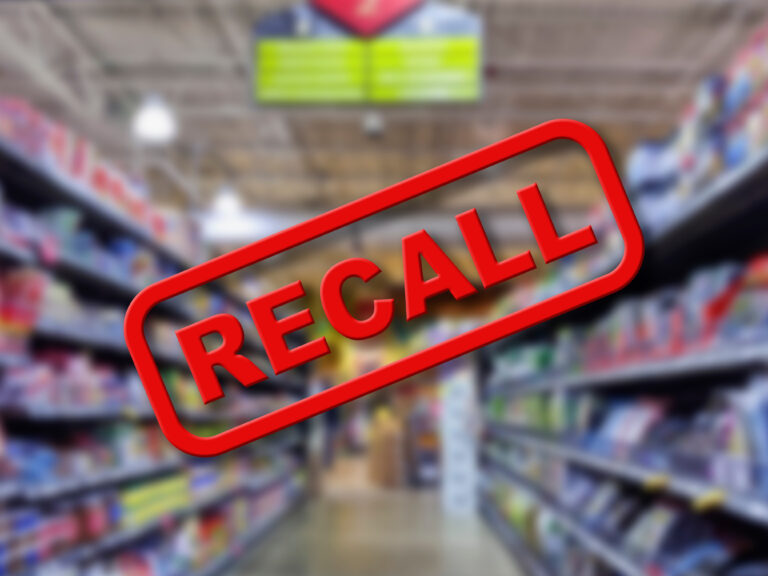If you were given five guesses as to the top causes of food recalls anytime in the last, say, decade, it is likely that undeclared allergens and bacterial contamination would fall somewhere among those five. And if you listed these as the top two causes, you’d get a gold star.
In two recently published reports, the Sedgwick quarterly report depicting food recall numbers and causes from Q1 2024, and a U.S. PIRG EdFund report providing an overview of 2023 food recalls overall, that was exactly the result. Not only were undeclared allergens the top reason for U.S. food recalls in Q1 2024 and 2023, but they were the leading cause each quarter, except one, of the last seven years.
Let’s look at the numbers:
- With undeclared allergens continuously a leading cause of recalls:
- Of the 157 FDA (134) and USDA (19) food recalls in Q1 2024, 55 were caused by undeclared allergens, making them 35% of the total.
- In 2023, 154 of the 313 FDA/USDA food recalls (49%) were due to undeclared allergens. Nearly 40% of those included undeclared sesame, which only became regulated as a major allergen that year.
- It is not surprising that nuts and peanuts would rise toward the top of the list, at least for FDA foods, but more unforeseen may be that undeclared milk was the top cause of all undeclared allergen recalls both in Q1 2024 (16%) and in 2023 (20%).
- Snack foods were the most common type of food recalled in 2023, nearly all of which were recalled for undeclared allergens.
- Both Q1 2024 and 2023 saw bacterial contamination come in second as a leading cause of recalls for both USDA and FDA foods:
- 34 Q1 2024 recalls were due to bacterial contamination, causing the highest number of FDA food units recalled (25 million).
- In 2023, 28% of all recalls were due to bacterial contamination (including, in order, Listeria, Salmonella, E. coli, Cronobacter)
- Foreign material contamination also was among the top causes of recalls for both:
- Coming in fourth in 2023, after not inspected/reinspected.
- Holding second place in Q1 2024 for both FDA, where it held second place in terms of volume, and USDA, where it tied with bacterial contamination.
The report from PIRG Edfund also provides some interesting facts about the impacts of bacterial contamination in food, including a CDC list of the top five causes of illness, hospitalization, and death as being:
- Illnesses: Norovirus, Salmonella, Clostridium perfringens, Campylobacter, Staphylococcus aureus
- Hospitalizations: Salmonella, Norovirus, Campylobacter, Toxoplasma gondii, E. coli O157
- Deaths: Salmonella, Toxoplasma gondii, Listeria, Norovirus, Campylobacter
What does all this tell us?
As discussed in TAG’s contribution to the Sedgwick Report (page 53), high profile and repetitive contamination events spur expanded oversight from both FDA and USDA.
Take, for example, the draft guidance on the FSMA Preventive Controls Rule Appendix 1 published in January, which expands hazard analysis requirements from evaluation of the product as a whole to the separate assessment of each ingredient in a product. Not only does this add to the analysis process, the lack of separate analysis will make the Food Safety Plan noncompliant. Another FDA example is the addition of sesame as a major allergen illustrating FDA’s action to address an ongoing issue.
From USDA FSIS, there was the publication of the final determination to declare Salmonella an adulterant in raw breaded stuffed chicken products, primarily due to the fact that consumers often mistake the product as being ready to eat. Despite ongoing efforts to increase label warnings and cooking instructions, consumer illnesses continue; so effective May 1, 2025, the determination sets down in history the first declaration of Salmonella as an adulterant in a raw poultry product.
Although the government bodies rarely move as quickly as many would like them to, regulations do tend to follow major and/or ongoing issues. So, keeping an eye on recall statistics, as well as other major industry events and published warning letters, can not only help keep you abreast of areas of potential focus by FDA and USDA, but also bring to mind areas which you may need some new or increased focus yourself.
Need assistance with a gap assessment? Give TAG a call – our experts can help!





